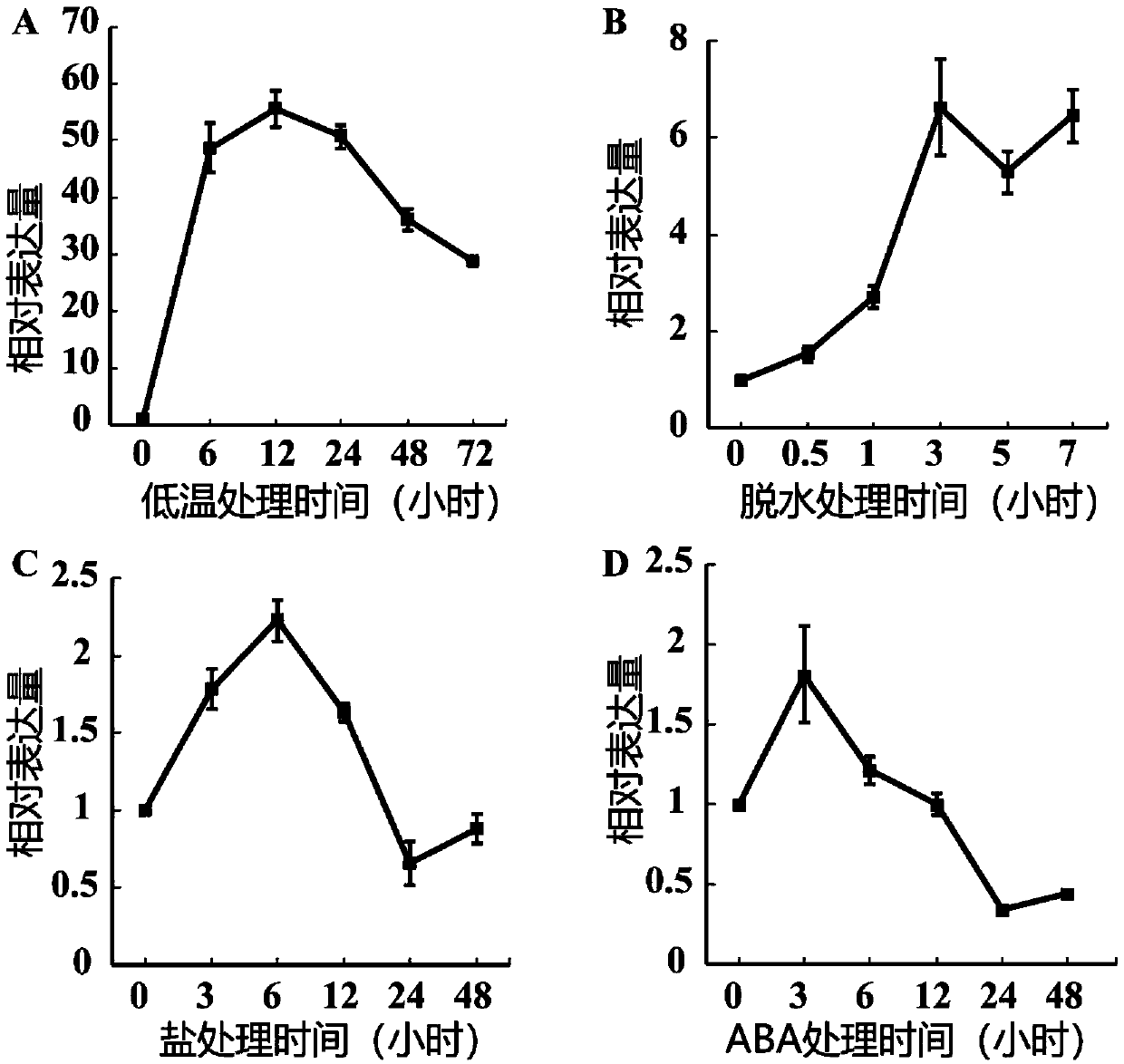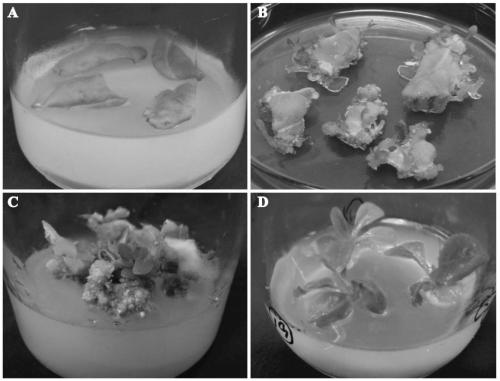Poncirus trifoliata cold resistant gene PtrTZF1 and application thereof to plant cold resistant heredity improvement
A gene and plant technology, applied in the direction of plant gene improvement, application, plant peptides, etc., can solve problems such as TZF that has not yet been seen, achieve the effect of reducing agricultural production costs and achieving environmental friendliness
- Summary
- Abstract
- Description
- Claims
- Application Information
AI Technical Summary
Problems solved by technology
Method used
Image
Examples
Embodiment 1
[0037] Example 1: Cloning of the full-length cDNA of the PtrTZF1 gene of Hovenia trifoliate
[0038] The cDNA of Hovenia trifoliate was used as a template and high-fidelity enzymes were used for amplification. The amplification system is shown in Table 1, and the amplification program is shown in Table 2. The sequences of the amplification primers are: 5'-CACATAAAAAGGCCCTCACC-3' and 5'-GAGCAGGGCCCTCATTTATCC-3'.
[0039] AxyPrep-96 DNA Gel Recovery Kit (Axygene, USA) was used to purify and recover the amplified product, and the purified product was compared with 18-T vector (TaKaRa, Japan) was used for ligation, and the ligation system was shown in Table 3. After incubation at 16°C for 30 min, it was transformed into Escherichia coli competent Trans5α.
[0040] Table 1 Gene amplification system
[0041]
[0042]
[0043] Table 2 Gene amplification PCR program
[0044]
[0045] 12-16 hours after transformation, pick a single clone on the plate and place it in a 1.5mL...
Embodiment 2
[0052] Example 2: Analysis of the expression of the PtrTZF1 gene under different stress conditions
[0053] The expression pattern of PtrTZF1 gene was analyzed by real-time fluorescent quantitative PCR (qRT-PCR), and the quantitative reagent was QuantiNova TM SYBRGreen PC (QIAGEN, Germany), the method refers to the instruction manual, and the reaction system is shown in Table 5.
[0054] Table 5 Quantitative PCR reaction system
[0055]
[0056] Primer 5.0 was used to design PtrTZF1 real-time quantitative primers (forward primer: 5'-GTTGCAATCTCCAACCGGGC-3'; reverse primer: 5'-GACTGGTCACTGCTCCACGA-3'), and citrus Actin was used as an internal reference gene (forward primer: 5'-CATCCCTCAGCACCTTCC- 3'; reverse primer: 5'-CCAACCTTAGCACTTCTCC-3'). The reaction procedure is shown in Table 6. After the reaction, use 2 -ΔΔCt The algorithm calculates gene expression.
[0057] Table 6 Quantitative PCR reaction program
[0058]
[0059]
[0060] The results showed that th...
Embodiment 3
[0061] Embodiment 3: Construction of PtrTZF1 gene overexpression vector
[0062] Primers were designed to amplify the full-length PtrTZF1 gene and insert it into the middle of the two restriction sites Xba I and Sma I on the pBI121 vector. The primers were designed as follows, using wild-type Citrus citrus cDNA as a template.
[0063] PtrTZF1-pBI121-F:5'-GC TCTAGA ATGGAAGGTGAACTCCCCAA-3'
[0064] PtrTZF1-pBI121-R:5'-TCC CCCGGG TTATGCCACCATCTGCTCCT-3'
[0065] Amplified fragment recovery, pMD18-T vector connection and transformation, positive clone detection and sample delivery for sequencing. Then PtrTZF1 was excised from the T vector and connected to the pBI121 vector by T4 ligase (for the schematic diagram of the vector, see figure 2 ), constructed pBI121-PtrTZF1, and transformed into GV3101 for the following examples.
PUM
| Property | Measurement | Unit |
|---|---|---|
| molecular weight | aaaaa | aaaaa |
Abstract
Description
Claims
Application Information
 Login to View More
Login to View More - R&D
- Intellectual Property
- Life Sciences
- Materials
- Tech Scout
- Unparalleled Data Quality
- Higher Quality Content
- 60% Fewer Hallucinations
Browse by: Latest US Patents, China's latest patents, Technical Efficacy Thesaurus, Application Domain, Technology Topic, Popular Technical Reports.
© 2025 PatSnap. All rights reserved.Legal|Privacy policy|Modern Slavery Act Transparency Statement|Sitemap|About US| Contact US: help@patsnap.com



